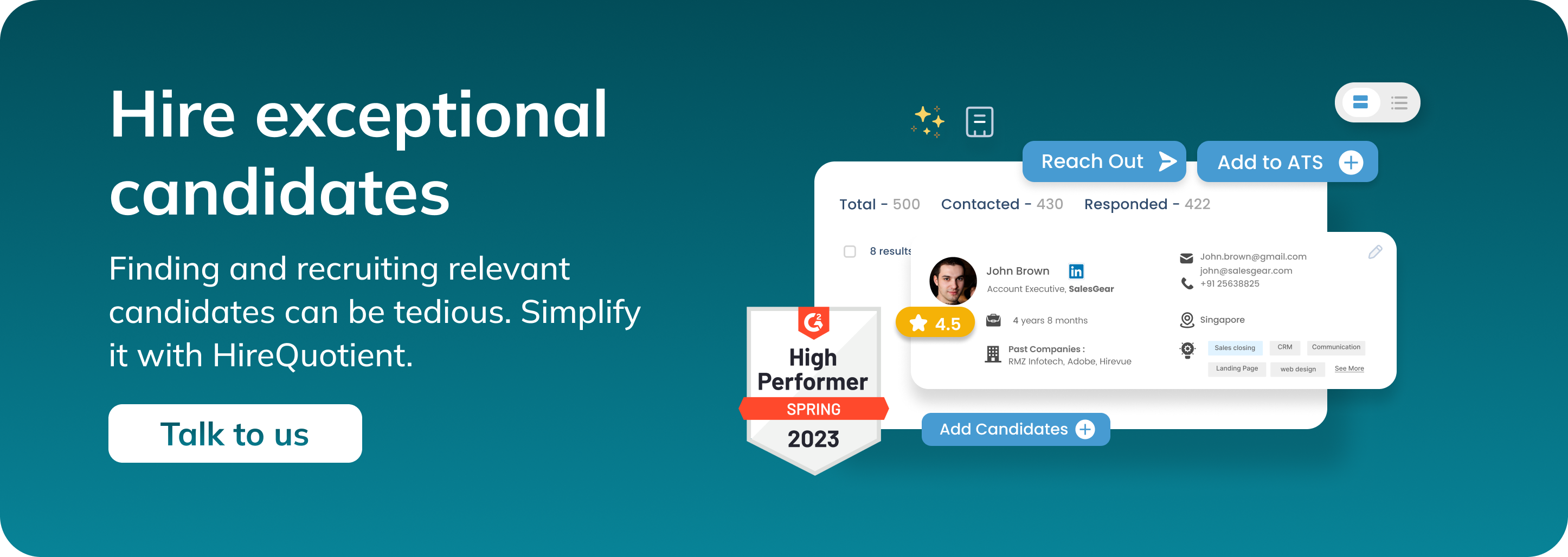What is a Healthy Attrition Rate?
Published on April 30th, 2023
Employee turnover is a vital HR metric that reflects the rate at which employees leave a company. Given that employee retention directly influences business outcomes, every recruiter or hiring manager aims to maintain a healthy attrition rate. But what is a healthy attrition rate, and what comprises an unhealthy turnover rate? This blog aims to provide in-depth insight into the significance of the right attrition rate and how to interpret it.
The Healthy Attrition Rate
According to industry benchmarks, the healthy attrition rate ranges between 10%-15% nationally. However, this number can vary according to the industry, organization size, or employee demographics. Nevertheless, the rate should remain consistent over time. A steady rate of employee turnover suggests a well-functioning organization with a balanced hiring and termination process.
The Cost of Unhealthy Attrition Rates
A high turnover rate can have an adverse impact on the morale, productivity, and revenue of an organization. Generally speaking, losing an employee can cost an organization up to 2.5 times the person's annual salary. Furthermore, replacing employees frequently indicates a lack of job satisfaction and long-term commitment to the company.
Interpreting Attrition Rates
A high attrition rate can be a red flag for an organization. However, before jumping to conclusions, it is essential to analyze other metrics such as employee engagement, job satisfaction, and organizational culture. Apart from internal factors, external factors such as industry trends, market demand, and economic conditions can also influence employee attrition.
Reducing Attrition Rates
Reducing the turnover rate can be challenging, but several initiatives can help achieve this task. These include conducting efficient onboarding, improving work-life balance, providing feedback and recognition, and strengthening company culture. Besides, tracking retention metrics such as employee engagement, job satisfaction, and industry benchmarks can help organizations identify areas requiring further improvement.
How to Manage Attrition Rates?
One of the common goals for organizations is to reduce employee turnover or attrition, which can help maintain a stable and productive workforce. To tackle this issue, it is important to address the root cause. One way to do this is by sourcing the right candidates for the job.
By automating the candidate sourcing process, organizations can significantly decrease their attrition rates. EasySource is an automated talent sourcing tool that enables recruiters to efficiently find and engage with relevant candidates. With the help of ChatGPT, recruiters can send customized messages to potential candidates, ensuring a better fit for the organization.
In summary, EasySource, available as a Chrome extension, is a valuable solution for organizations to find highly relevant candidates who resonate with the organization’s culture.
Conclusion
Effective management of attrition rates requires a proactive approach and a holistic understanding of the HR metrics. While every organization aims to maintain a healthy attrition rate, the number can vary according to the industry, organization size, and employee demographics. Additionally, interpreting the data requires an in-depth analysis of other metrics and external factors that affect employee turnover. Finally, initiatives such as creating a positive work culture, conducting efficient onboarding, and tracking retention metrics can help reduce attrition rates and improve organizational outcomes in the long run.
Authors

Radhika Sarraf
Radhika Sarraf is a content specialist and a woman of many passions who currently works at HireQuotient, a leading recruitment SaaS company. She is a versatile writer with experience in creating compelling articles, blogs, social media posts, and marketing collaterals.
Hire the best without stress
Ask us how
Never Miss The Updates
We cover all recruitment, talent analytics, L&D, DEI, pre-employment, candidate screening, and hiring tools. Join our force & subscribe now!
Stay On Top Of Everything In HR


